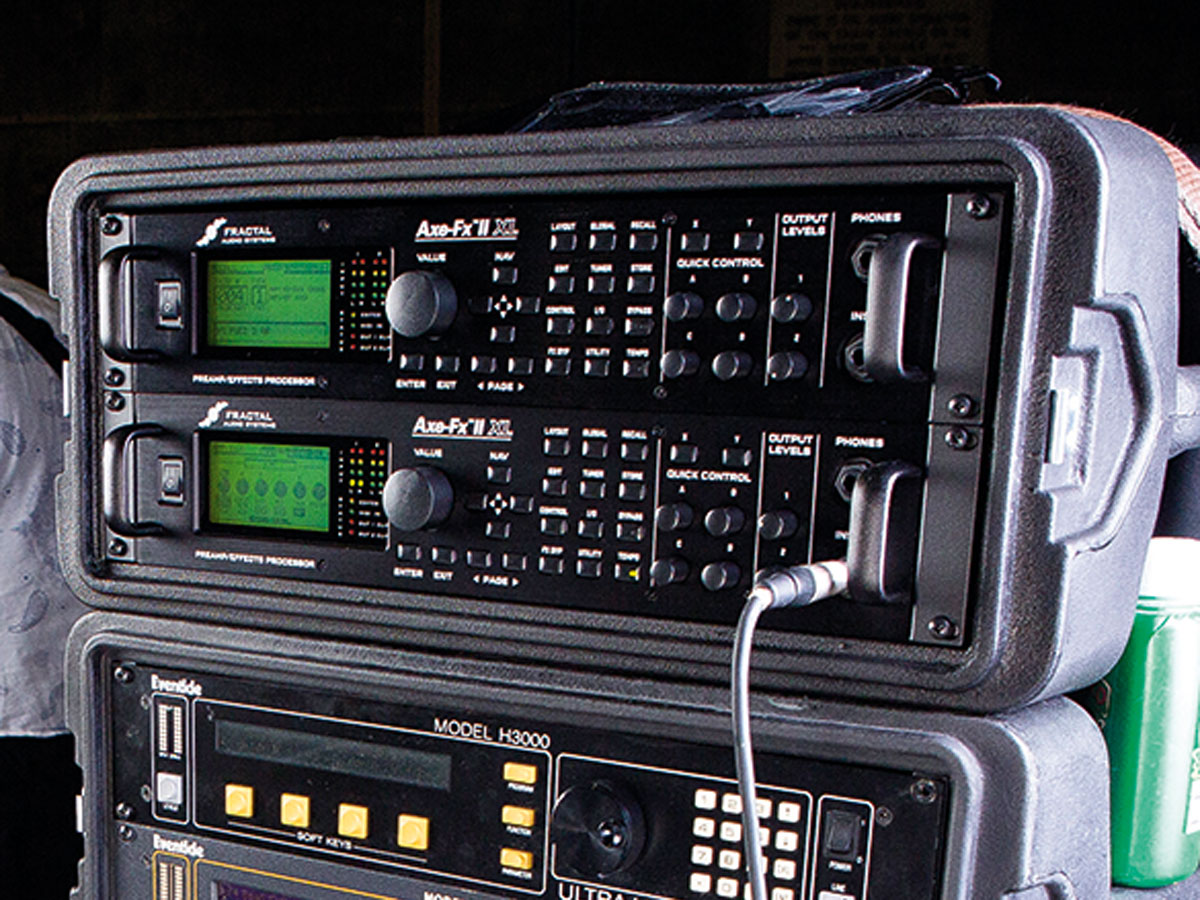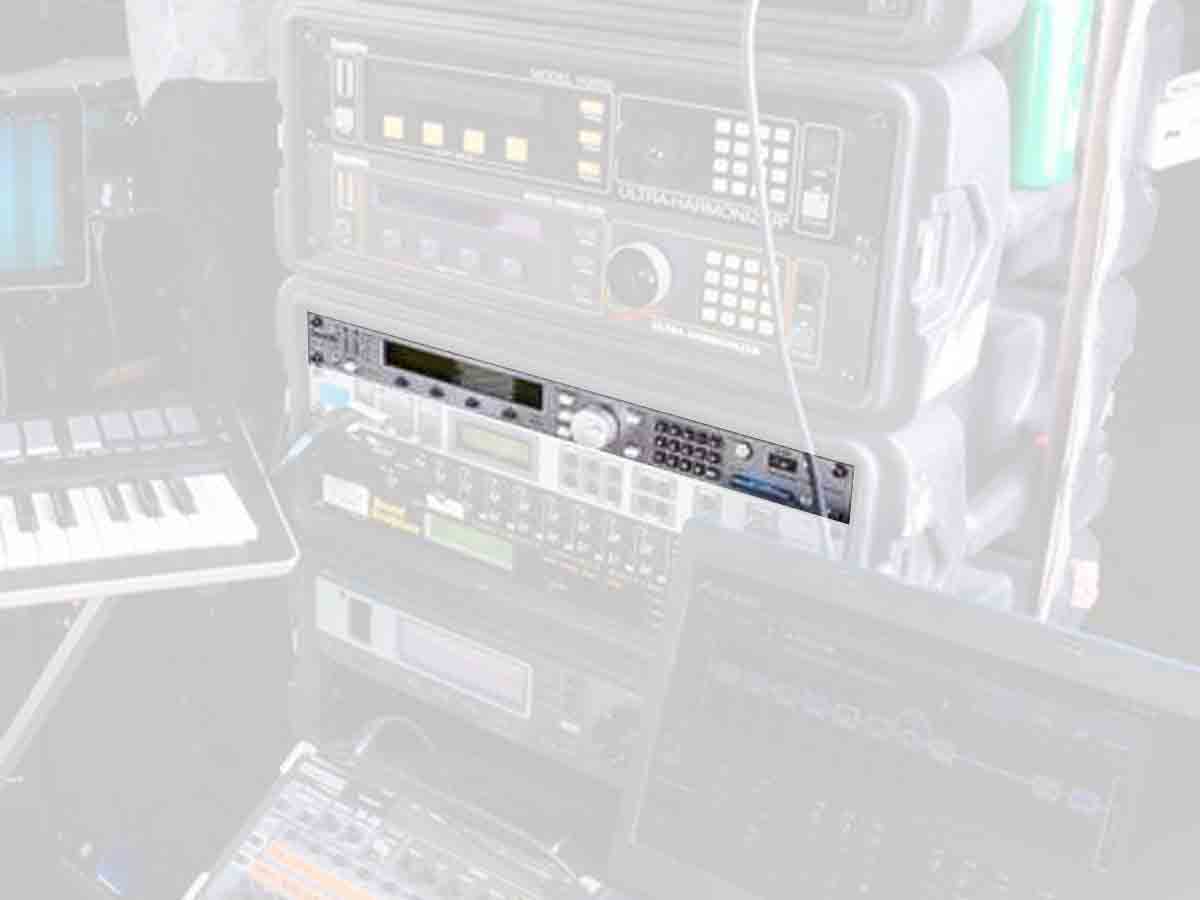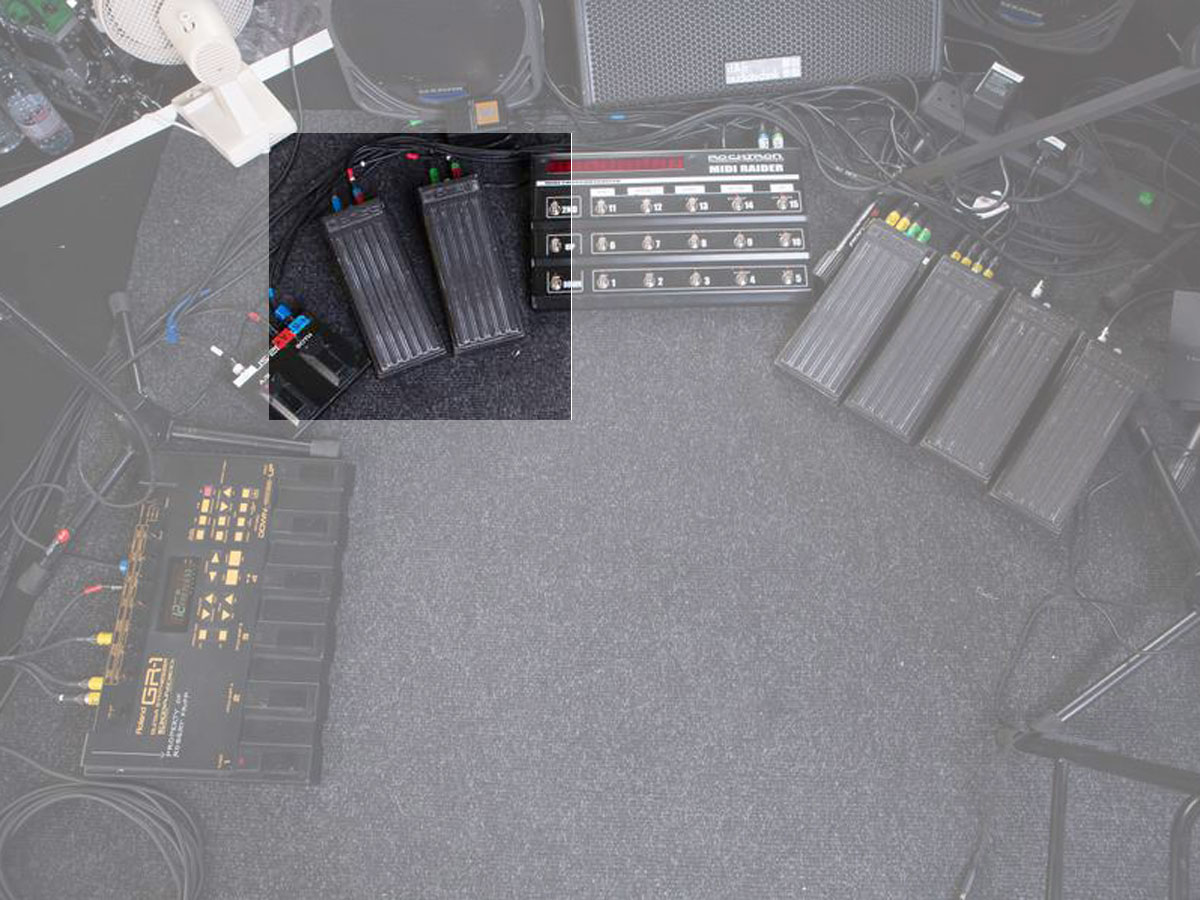Rig tour: Robert Fripp
The King Crimson man's mind-boggling setup
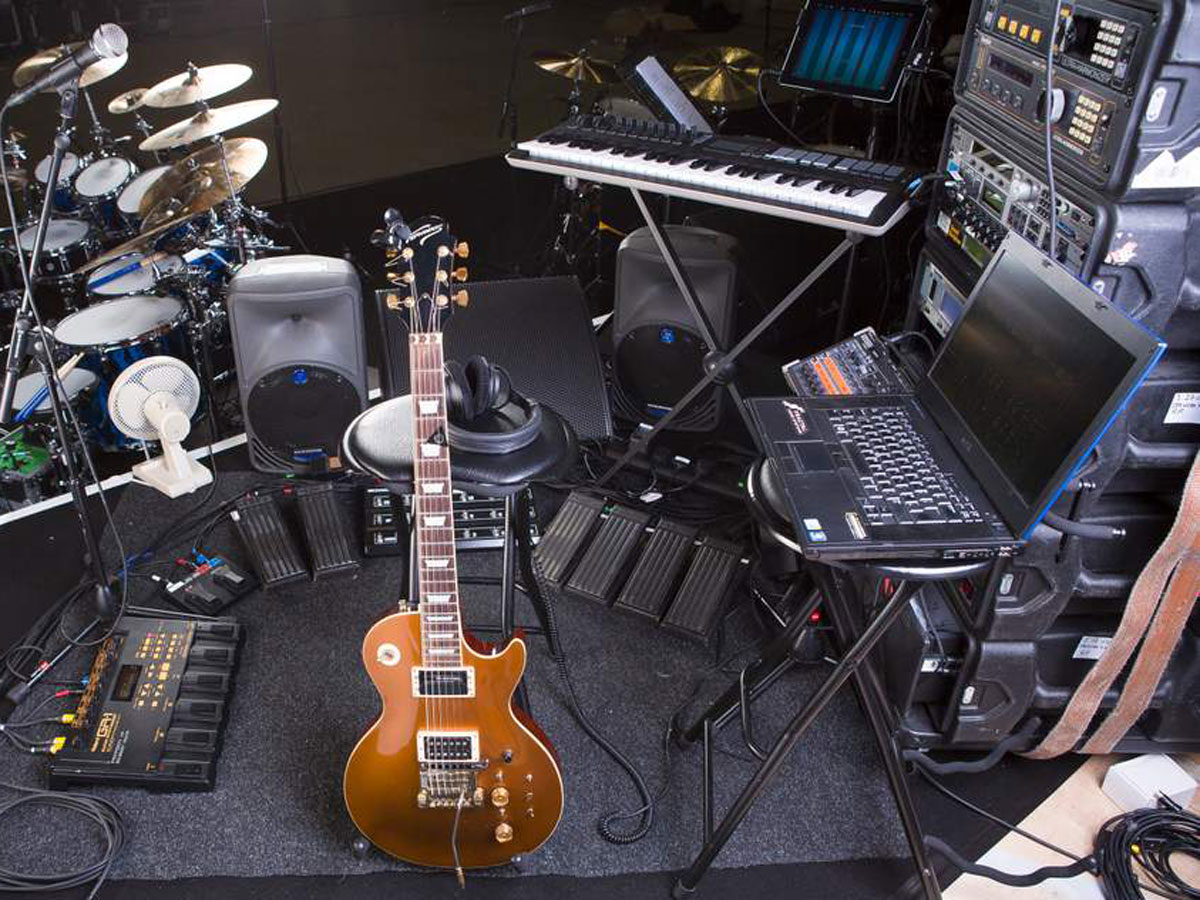
Introduction
Robert Fripp is the mind-blowing guitarist and only constant member of King Crimson. He is the axis around which the rest of the ever-evolving band spins.
Fripp's renowned for his pioneering, demanding approach to guitar playing and his rig reflects that, too - offering near complete control. Now, with King Crimson returning to the live arena in the US, it seemed like the perfect time for us to catchup on a rig that's as complex and idiosyncratic as the player himself.
Strap in and pay attention as Mr Fripp’s guitar tech Trev Wilkins walks us through the Crimson king’s weird and wonderful gear...
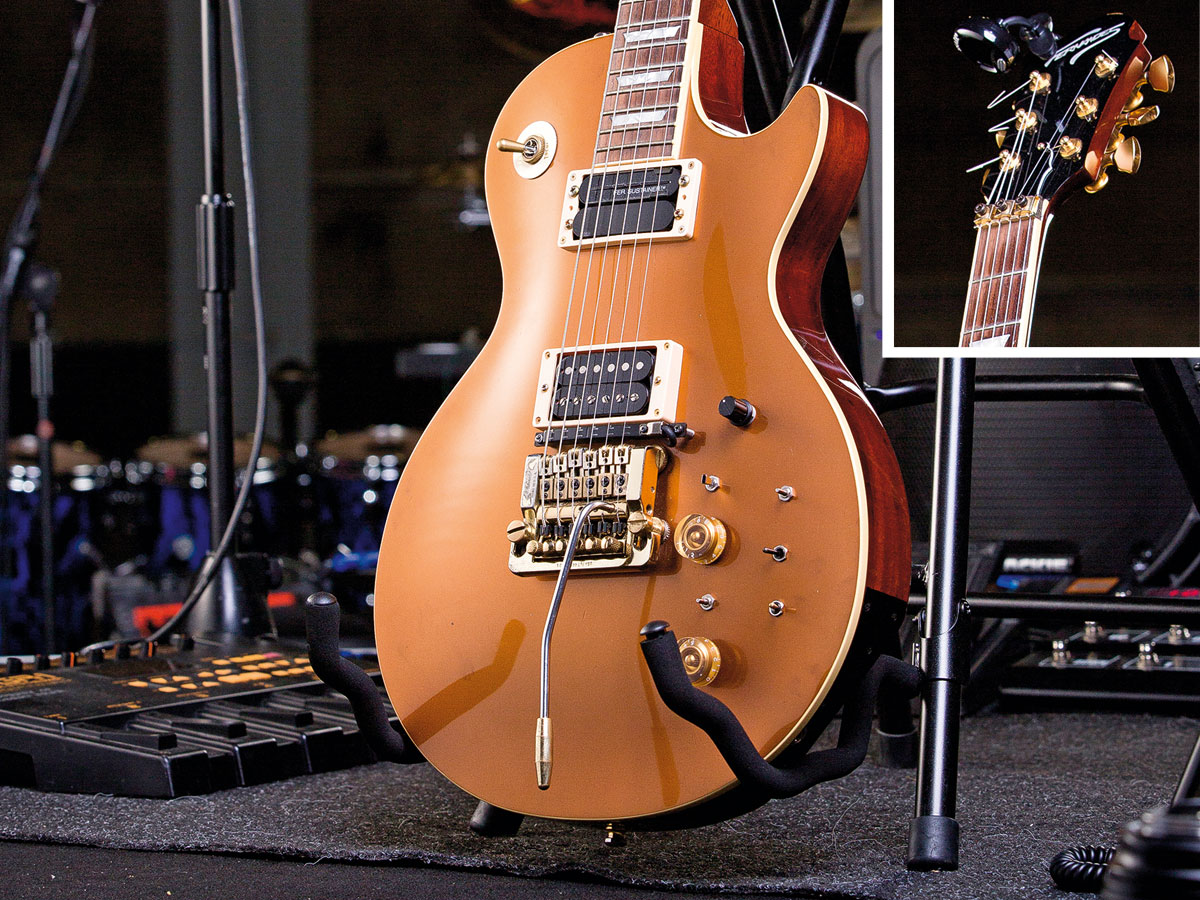
Fernandes Custom Gold
"Robert seems to favour this Fernandes Goldtop Custom, which was built for him in Japan in about 1995.
"Most of his guitars have generally got the same system: a built-in MIDI pickup, a humbucker and a Sustainer. The toggle switches mean they're totally flexible, so he can switch everything in and out."
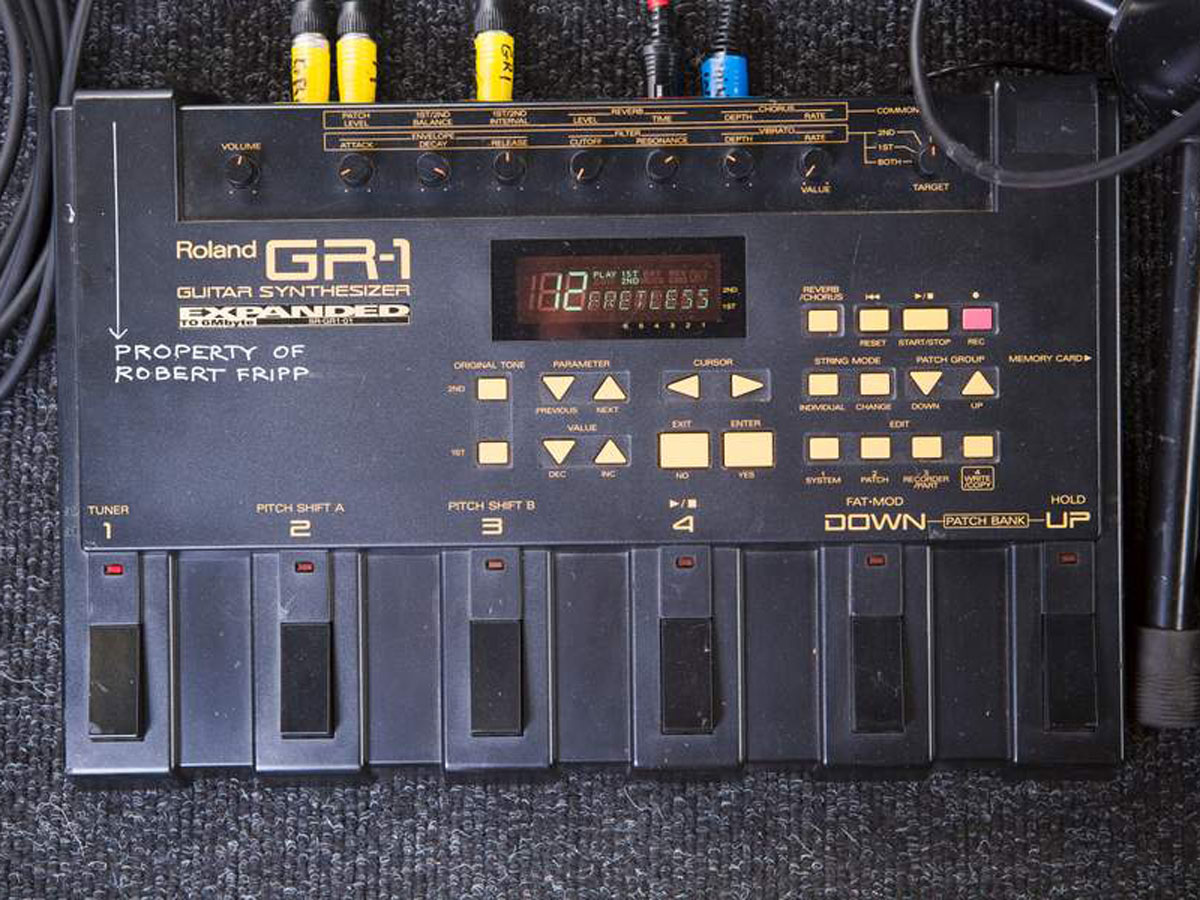
Roland GR-1 Guitar Synth/US20 splitter
"A 13-pin cable comes out of the guitar and goes into this [AB/Y] splitter, which goes to the Roland GR-1 Guitar Synth and to the Axon AX100 [rack-mounted guitar-to-MIDI controller].
"A standard jack then runs out the back of the GR-1 to the Axe-FX II XLs at the top of the rack."
Roland US20 splitter
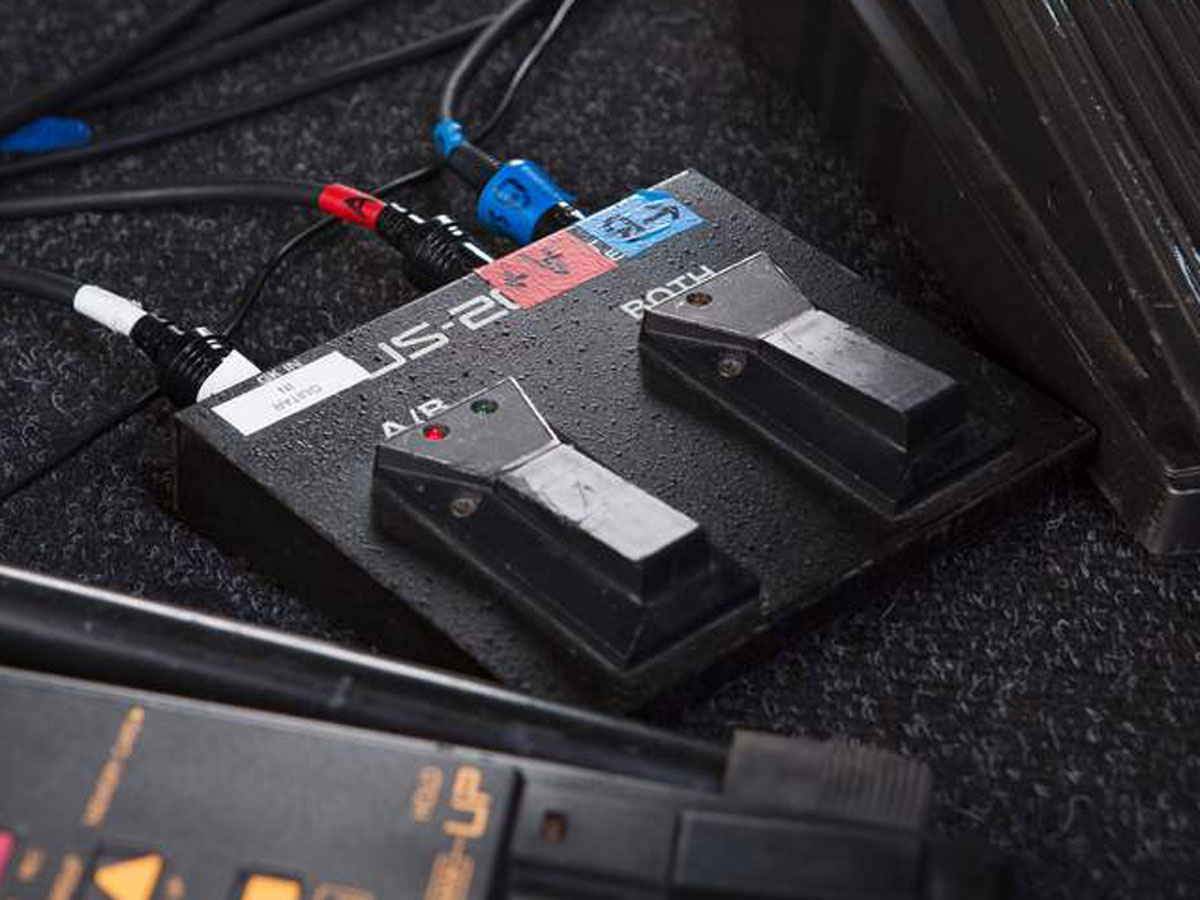
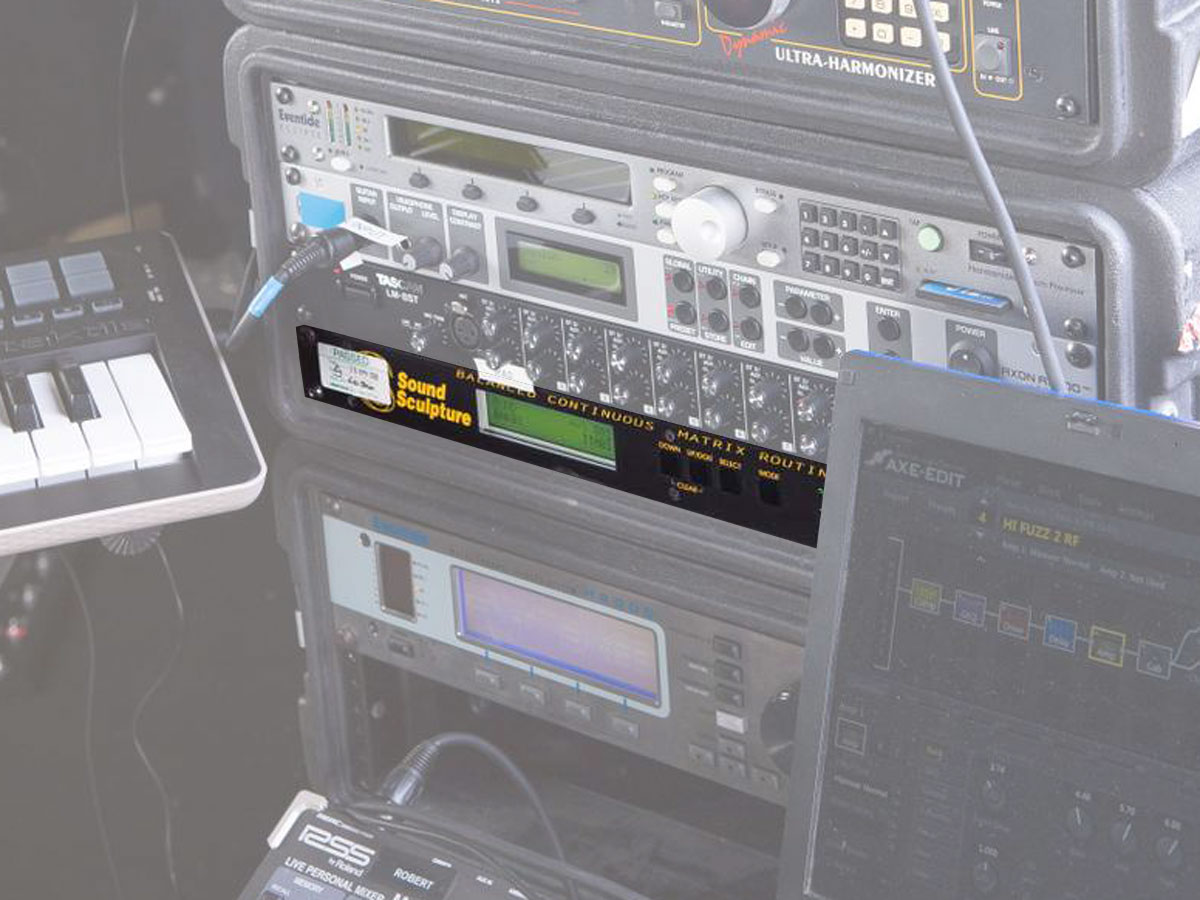
Sound Sculpture Switchblade
"All of the outputs from the Axe-FX, the Axon and the GR-1 go into this Switchblade, which is like a patch bay.
"You've got two stereo signals running from here into the Eventide H8000 and H3500 effects units and a third stereo signal going to the Eventide Eclipse, all of which is then sent back into the Switchblade [and out to the final mix]."
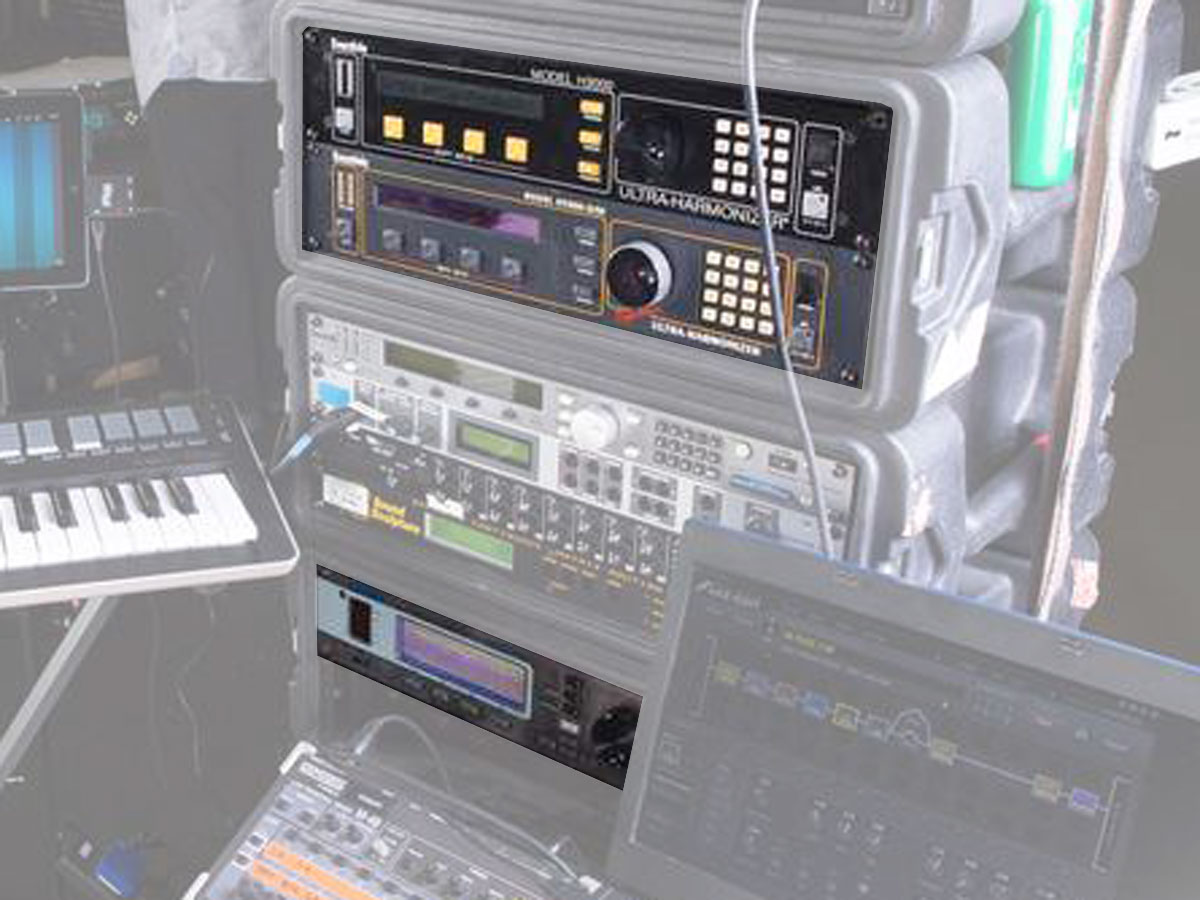
Eventide H8000 and H3000/3500
"The 8000s [only one pictured, due to repairs] are generally what Robert uses to create those massive loops that go on for days.
"He'll play things and forty seconds later they'll appear in the surround speakers. The 3000s are used for other effects, like the tap delay."
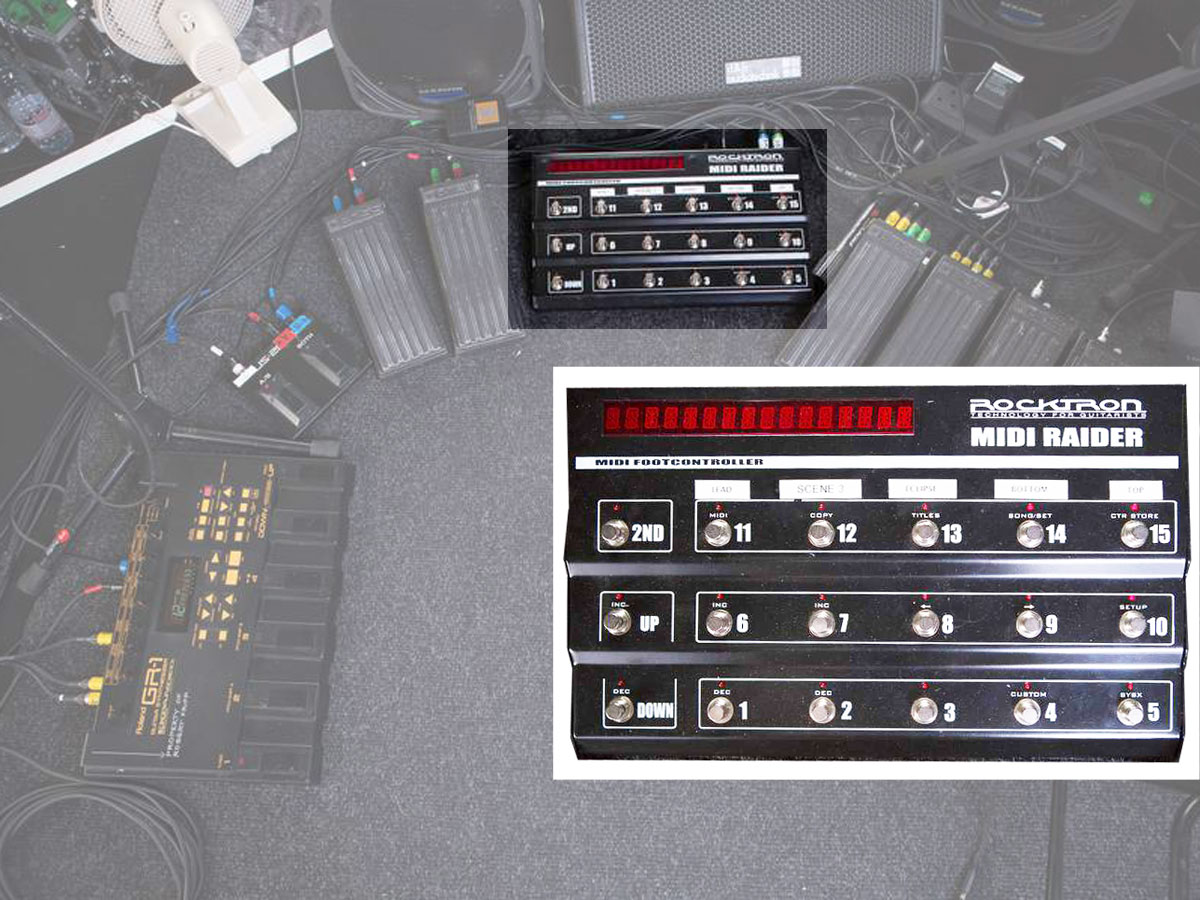
Rocktron MIDI Raider
"This is the heart of the whole system. Everything's got a MIDI address, so Robert can tell the MIDI Raider all the parameters that he wants -which units in, which units out, which presets on the Axe-FX -and program it so that when he clicks on that patch, the whole system will go into the mode required.
"The bottom ten switches on the right [numbers 1-10] are all assigned to certain songs. On the top row, 11 is what we call the 'lead' channel or Scene 2 on the Axe-FX and 12 has got Scene 3. Number 13 switches the Eclipse in and out and 14 and 15, labelled bottom and top, are the Eventide H8000 and 3000s."
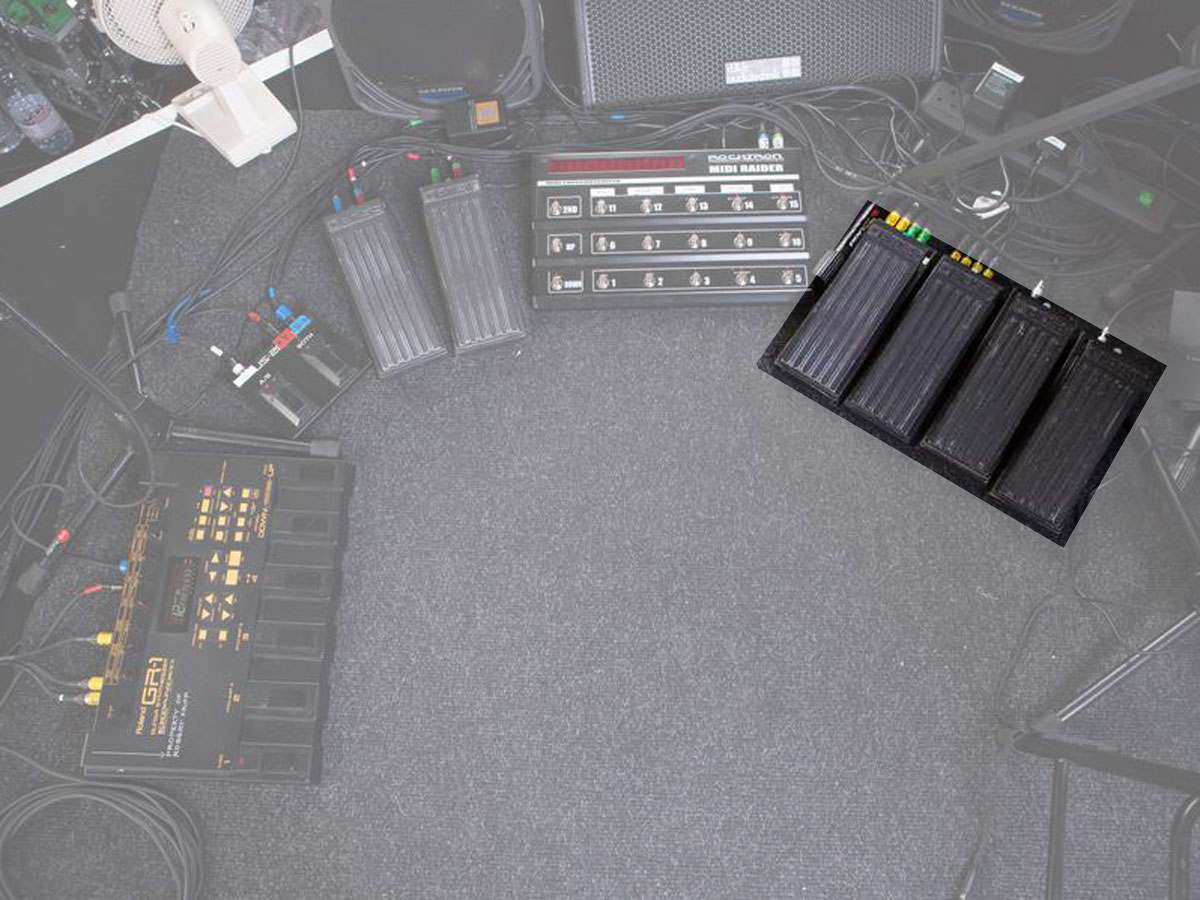
Boss Expression pedal #3-6 (left to right)
Boss Expression pedal #3 - Switchblade input level
"The Switchblade sends a stereo mix [from the Axe-FX, the Axon and the GR-1] to this volume pedal and, depending what's switched in and out, this pedal controls the signal within the system [before it's sent to the Eventide units]."
Boss Expression pedal #4 - Eclipse parameter control
Boss Expression pedal #5 & 6 - Axe-FX parameter controls
"We're using the two pedal outputs from the Axe-FX, so we've got two continuous control pedals and we can assign those to anything, mainly the dry/wet mix for the effects within the unit."
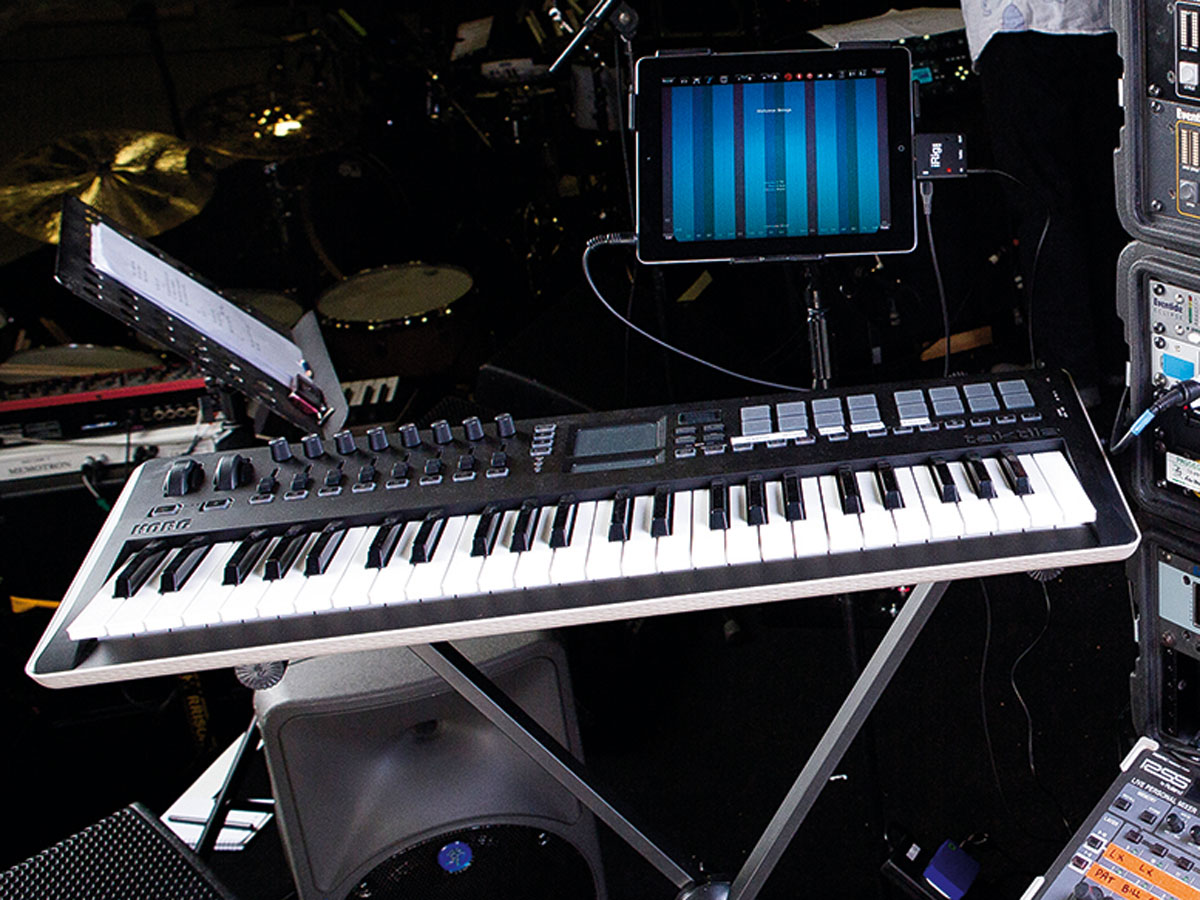
Korg Taktile and iPad
"It's just a keyboard controller. The sound is from an iPad app called ThumbJam, which reacts to MIDI messages.
"I've got an IK Multimedia iRig MIDI connecting it, so that Robert can call up Mellotron strings, brass, choir and flute on the Taktile pads and play them live on the keyboard.
"The iPad signal goes then to the effects return on the Axe-FX, so you can call it up on the MIDI Raider and use the effects in the Axe-FX and Eventides."

Monitor mixer and laptop
Monitor mixer
"Each member of the band has a monitor mixer so that they can set what they're hearing on the headphones. A lot of the songs also have clicks going on, so they can access them through the mixer, too."
Laptop
"The Laptop is also Robert's and that's connected to the Axe-FX over USB, so that we can tweak things. Robert doesn't get somebody else to handle effects for him, he's very hands-on. It's a complete holistic approach."
Signal path
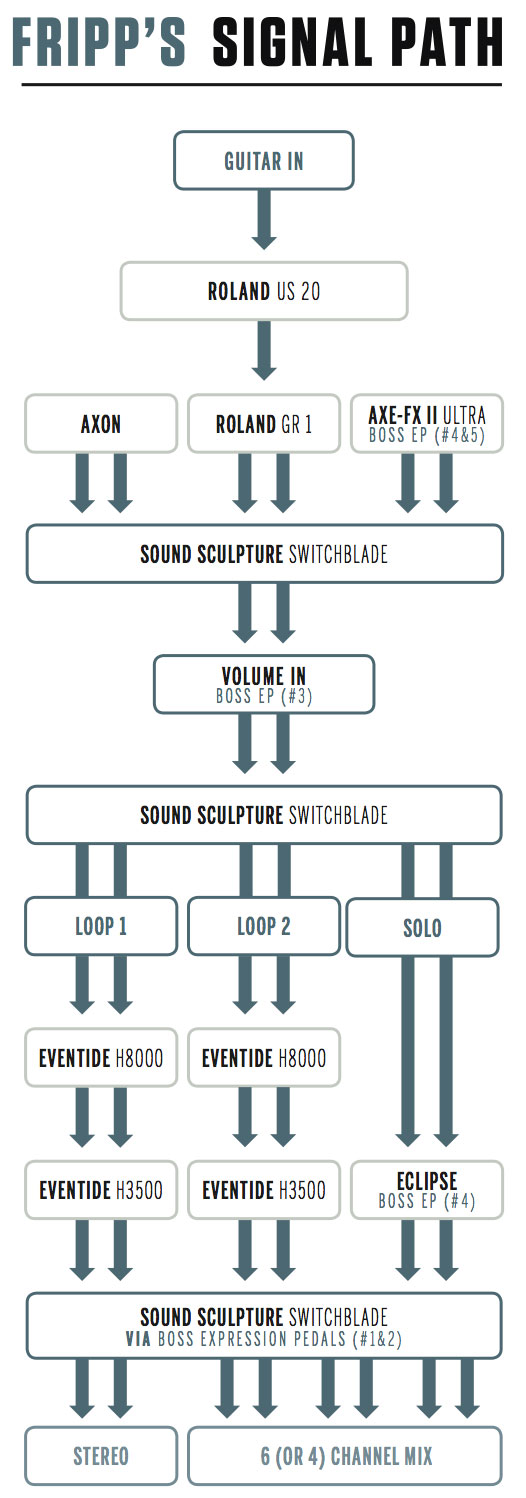
Matt is a freelance journalist who has spent the last decade interviewing musicians for the likes of Total Guitar, Guitarist, Guitar World, MusicRadar, NME.com, DJ Mag and Electronic Sound. In 2020, he launched CreativeMoney.co.uk, which aims to share the ideas that make creative lifestyles more sustainable. He plays guitar, but should not be allowed near your delay pedals.
